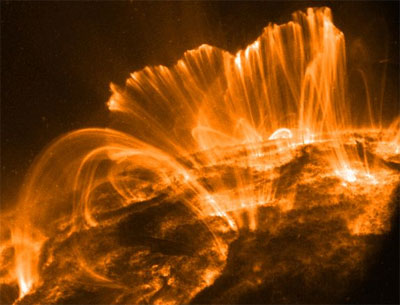A nuclear weapon explodes high above the US, unleashing a deadly electromagnetic pulse (EMP) that almost instantly knocks out much of our electrical grid. The electronic control systems in our water, oil, and gas distribution systems fail, and other infrastructure such as telecommunications and transport grind to a halt. While it would be far too high up in the atmosphere (40–400 kilometers) to directly kill people by blast and heat, such an attack would have “the capability to produce significant damage to critical infrastructures and thus to the very fabric of US society”, according to the congressional “Commission to Assess the Threat to the U.S. from EMP Attack”.
But how likely is this scenario and what should we do about it? The methodology and conclusions of the EMP commission have already been criticized a few years ago [1,2,3]. Here I examine the salient technical issues and attempt to compare the threat of nuclear EMP with that from a powerful “once-in-a-century” geomagnetic storm.
The precise effects of nuclear EMP are difficult to predict but depend on, among other factors, the yield of the weapon, the detonation altitude, as well as upon the geographic latitude and the magnitude of the local geomagnetic field. Knowing the type of adversary who may entertain such an attack allows us to narrow down the sorts of weapons that may be employed, how they may be used, and thus the type of threat we possibly face.
read more at link http://www.thespacereview.com/article/1549/1
But how likely is this scenario and what should we do about it? The methodology and conclusions of the EMP commission have already been criticized a few years ago [1,2,3]. Here I examine the salient technical issues and attempt to compare the threat of nuclear EMP with that from a powerful “once-in-a-century” geomagnetic storm.
The precise effects of nuclear EMP are difficult to predict but depend on, among other factors, the yield of the weapon, the detonation altitude, as well as upon the geographic latitude and the magnitude of the local geomagnetic field. Knowing the type of adversary who may entertain such an attack allows us to narrow down the sorts of weapons that may be employed, how they may be used, and thus the type of threat we possibly face.
read more at link http://www.thespacereview.com/article/1549/1











